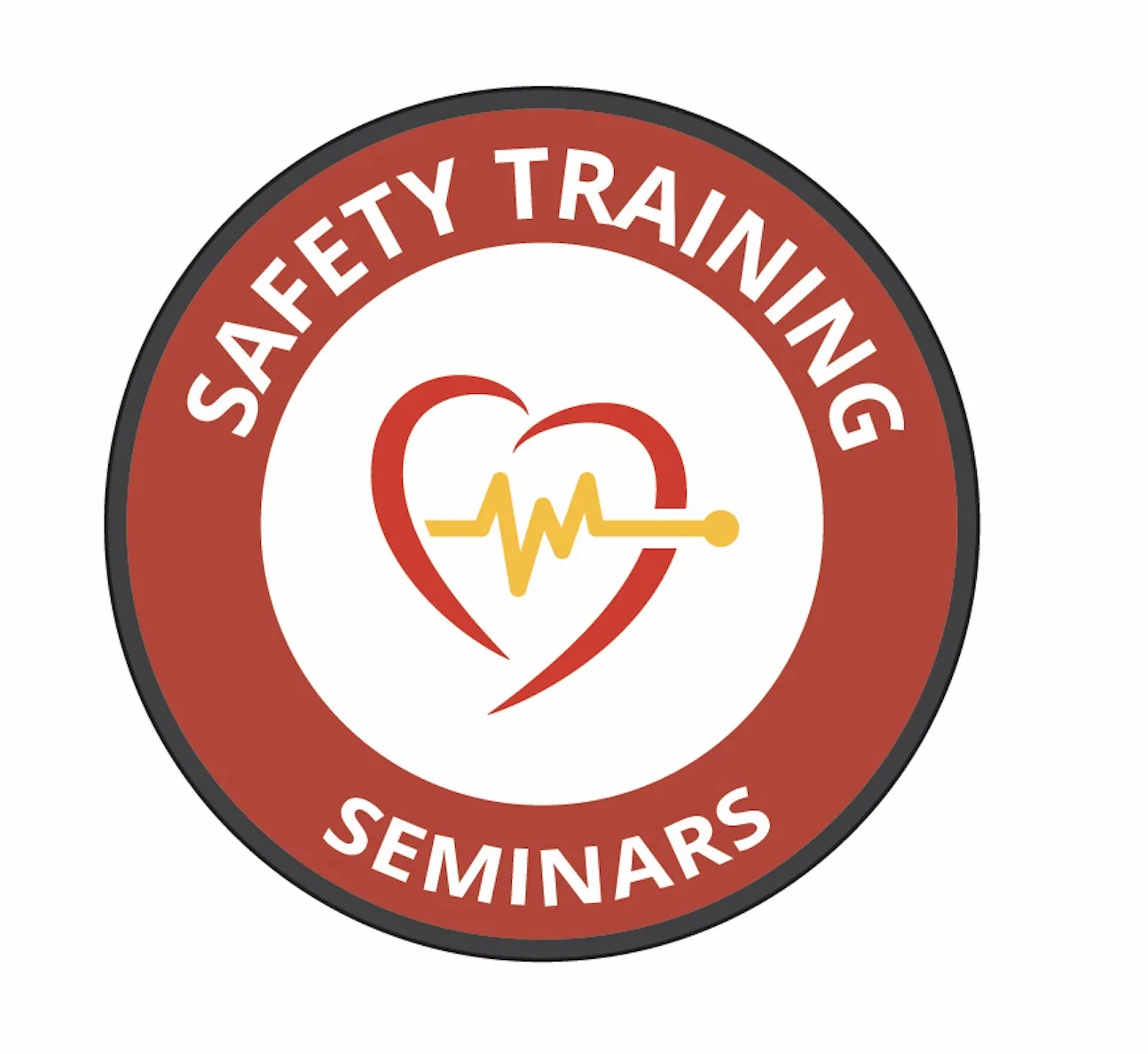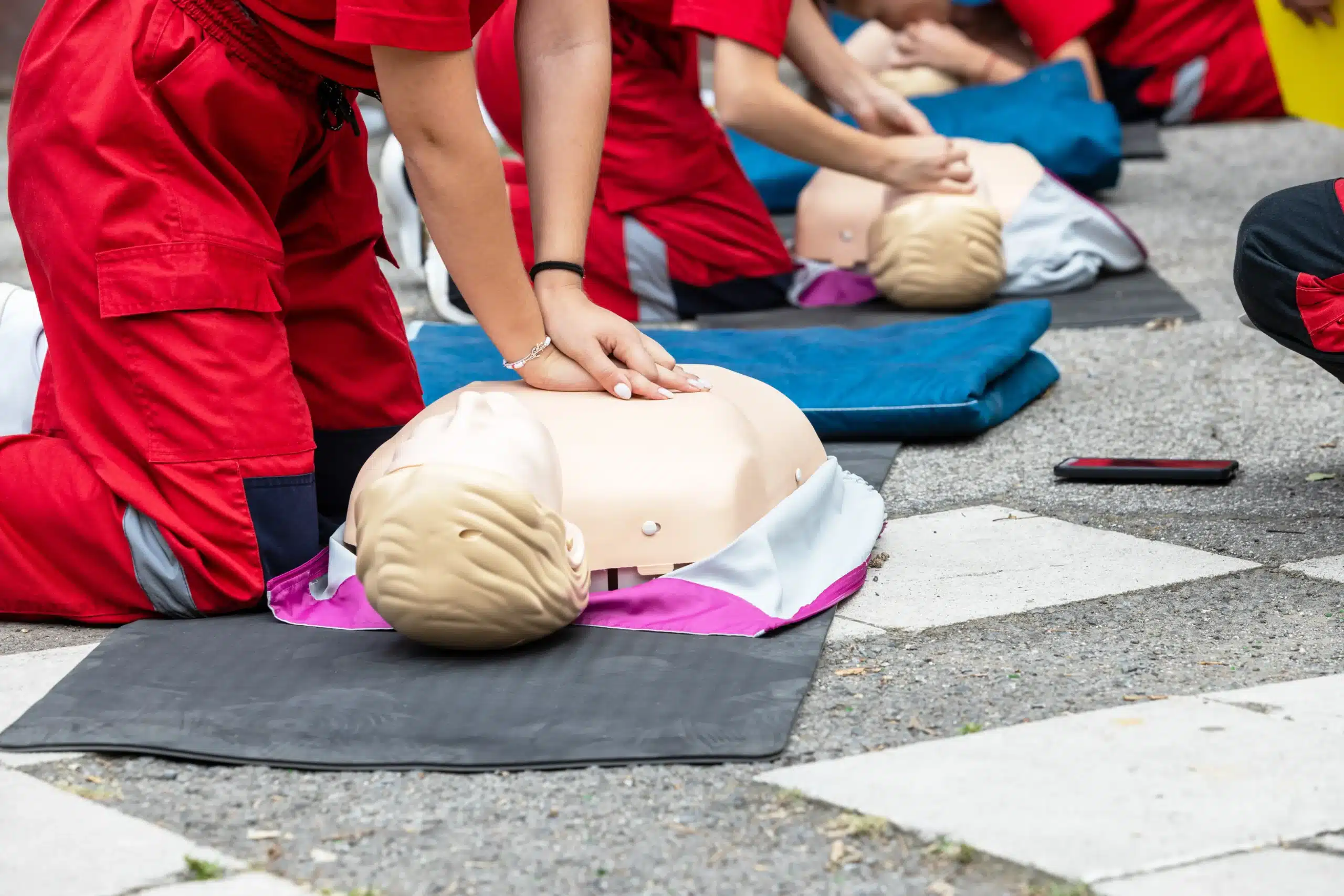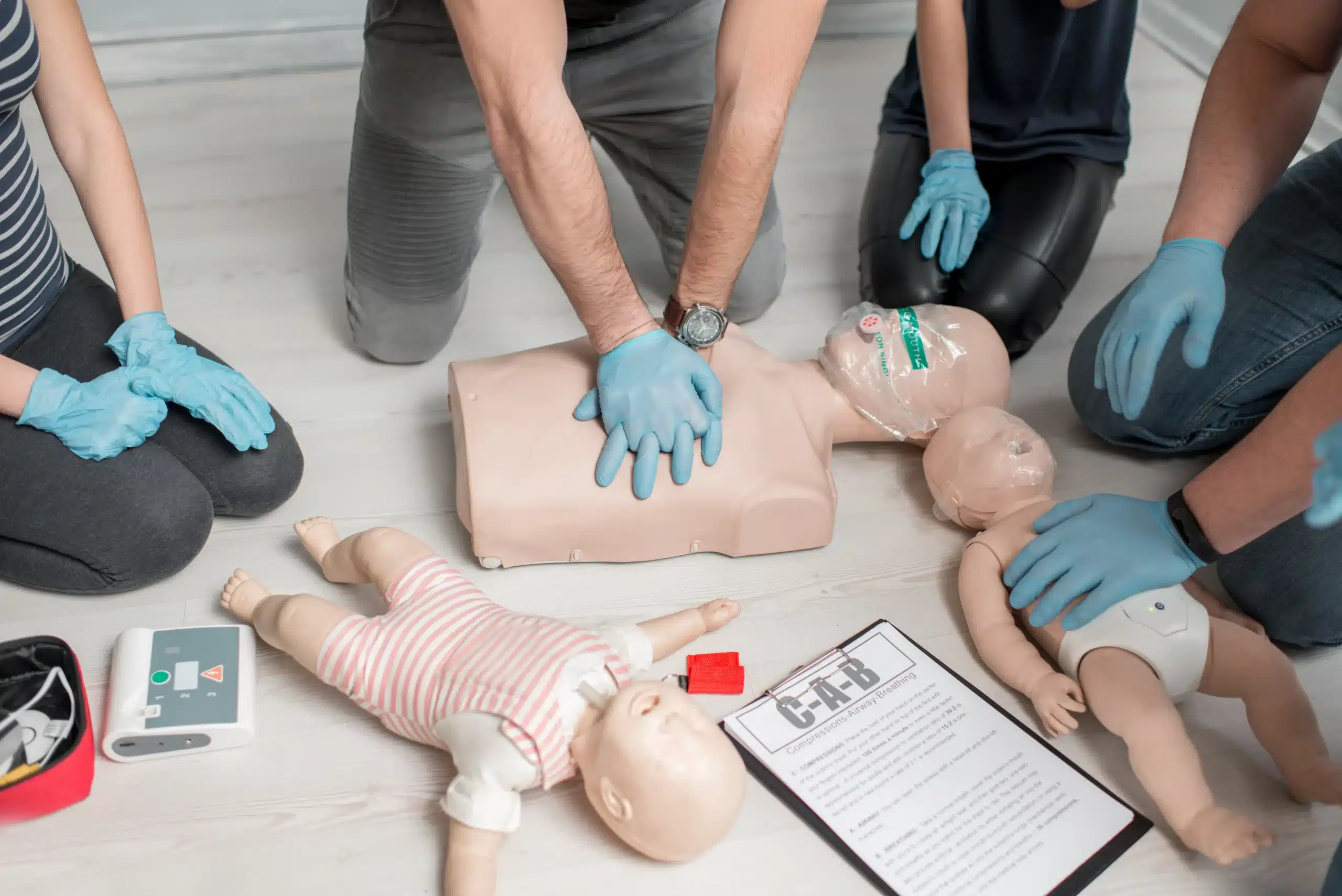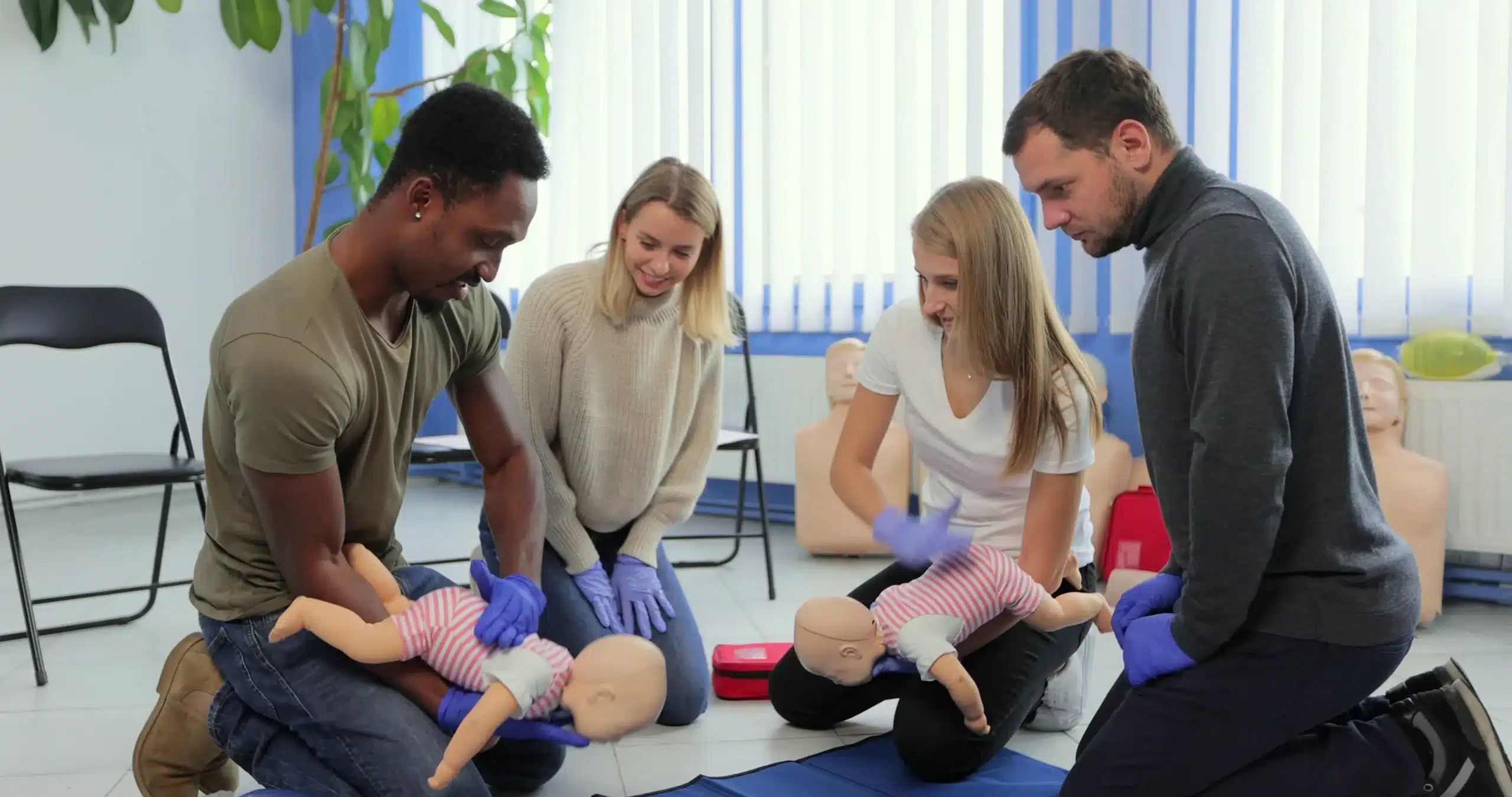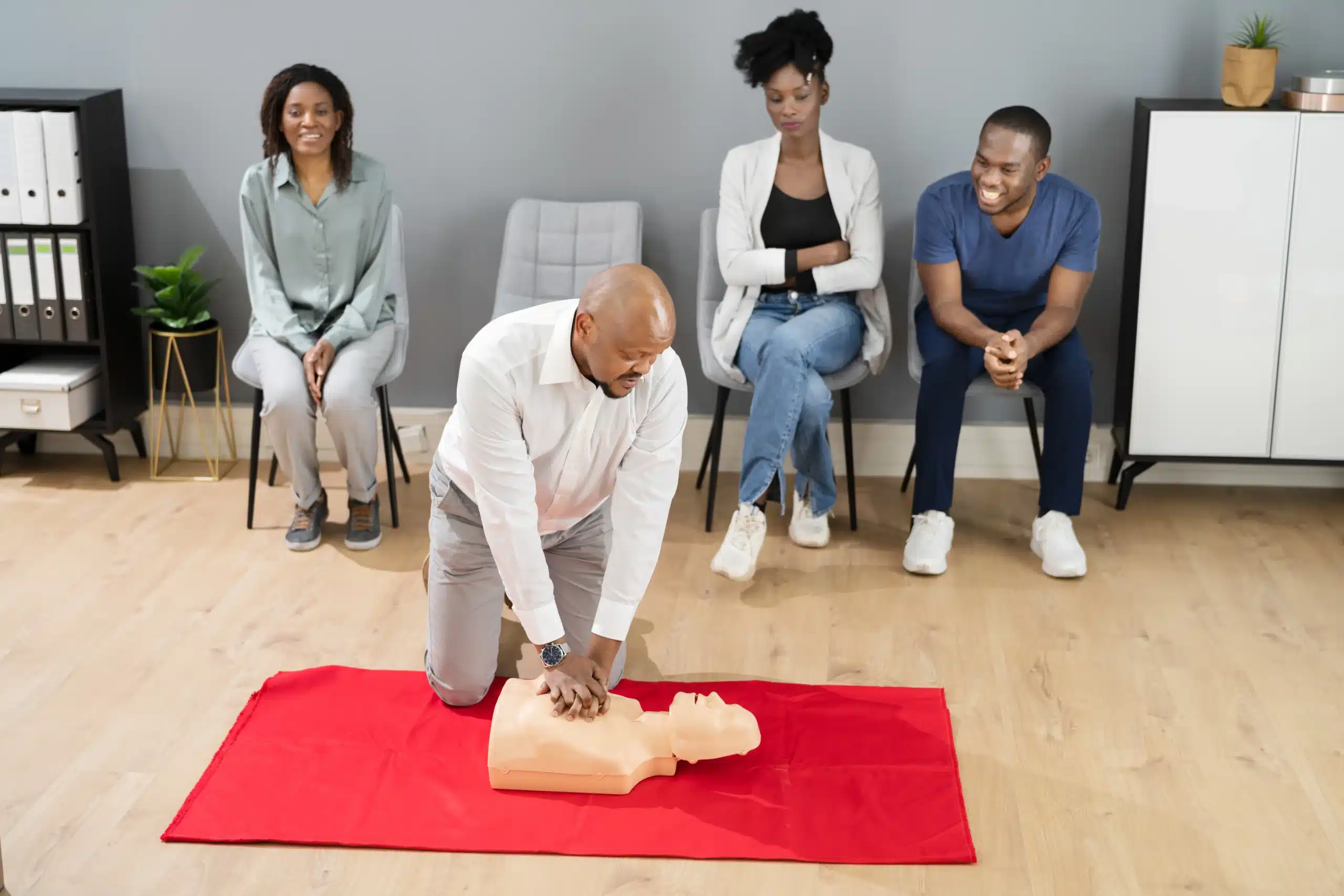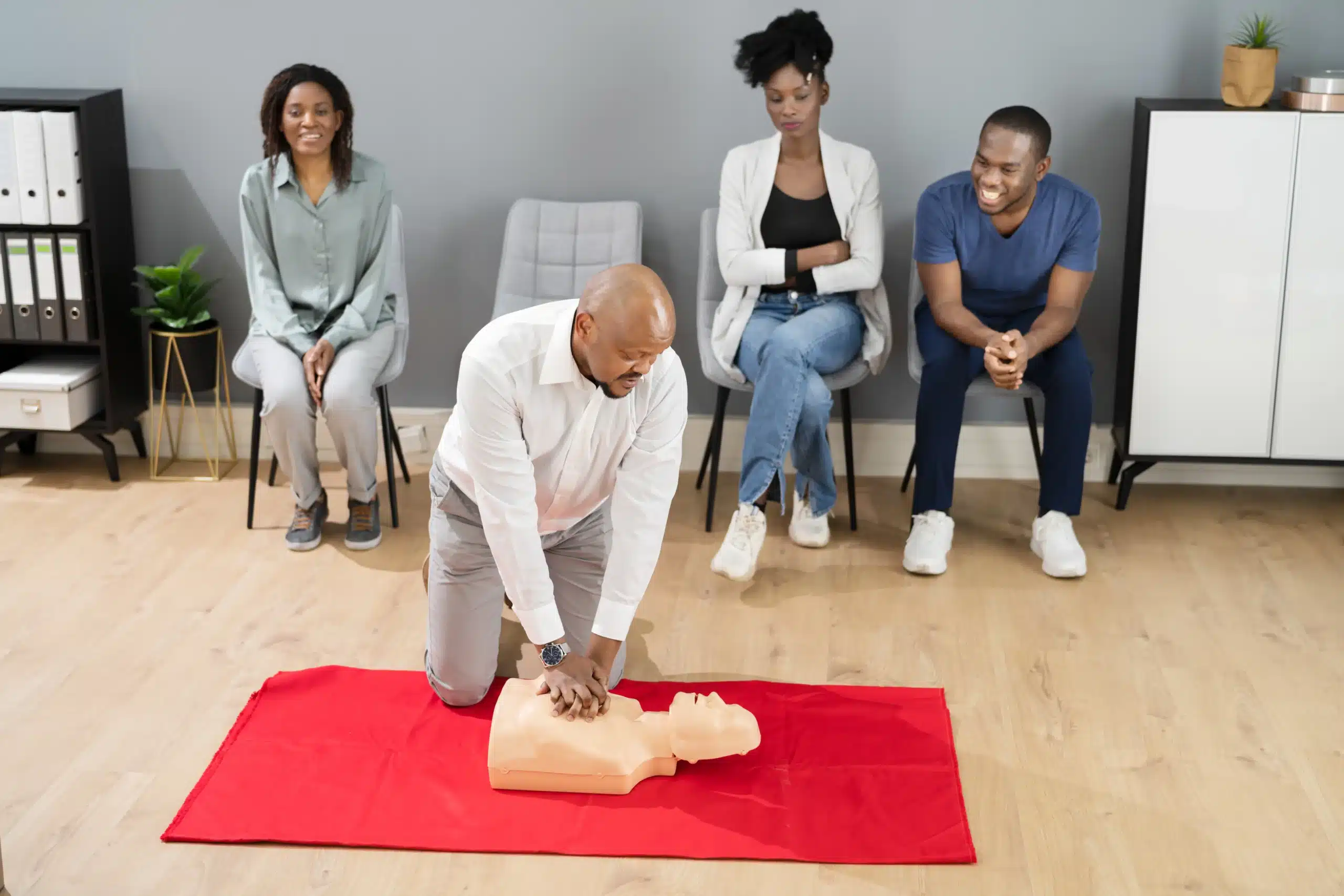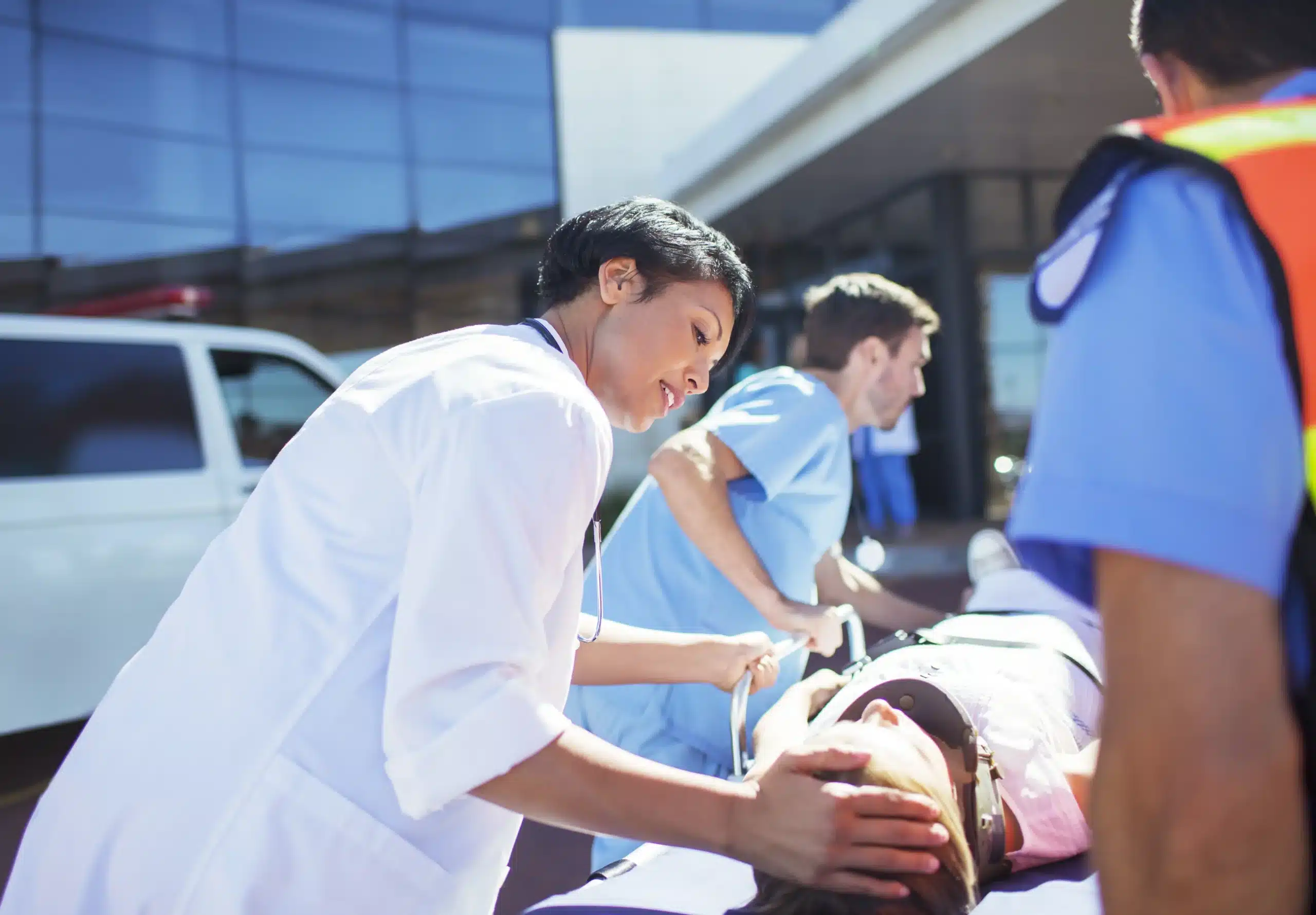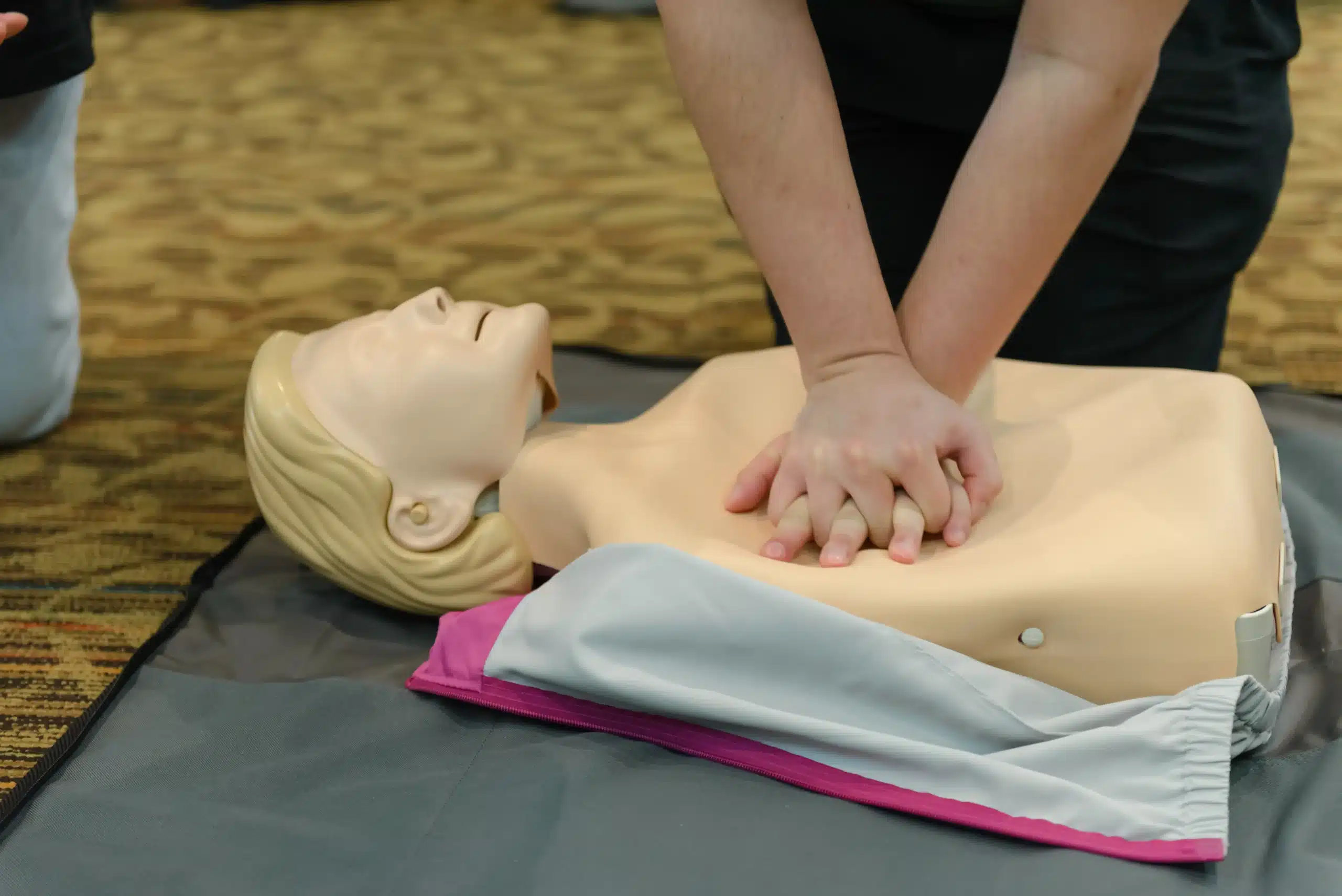Working in healthcare means juggling a lot, and renewing your AHA BLS certification might feel like one more thing on your to-do list. But it’s a crucial step in providing the best possible care. This guide streamlines the process, helping you quickly find “AHA BLS Renewal near me.” We’ll explore various course options, including in-person, online, and blended learning formats, and discuss the pros and cons of each. We’ll also cover what to expect during the renewal course, typical costs, and how to maintain your certification in the long run.
Key Takeaways
- Stay current with life-saving skills: Renewing your BLS certification keeps your CPR and emergency response skills sharp, ensuring you’re prepared to provide effective care when it matters most.
- Find a renewal course that works for you: Explore various learning formats (in-person, blended, or online) and compare providers to find a course that aligns with your schedule, budget, and learning preferences. Always confirm AHA accreditation.
- Be prepared and proactive: Check your certification status, gather necessary materials, and review key concepts before your renewal course. Track your expiration date and stay informed about AHA updates to maintain your certification effortlessly.
What is AHA BLS Renewal?
AHA BLS (Basic Life Support) Renewal is for anyone already certified in BLS who needs a refresher to keep their certification current. The American Heart Association (AHA) requires BLS certification renewal every two years. This ensures healthcare providers stay up-to-date on the latest life-saving techniques and guidelines, like high-quality CPR and using an AED. You can find more information about BLS course options on the AHA website.
Renewing your AHA BLS certification involves taking a dedicated renewal course. These courses typically review essential skills such as high-quality CPR, using an AED (Automated External Defibrillator), and relieving choking in adults, children, and infants. The renewal course is streamlined, usually taking about three hours including skills practice and testing.
You have a 30-day grace period to renew after your certification expires. After that, you’ll need to retake the initial provider course instead of the shorter renewal course.
Why Renew Your AHA BLS Certification?
As a healthcare provider, staying up-to-date with the latest life-saving techniques is crucial. Renewing your AHA BLS certification isn’t just a formality; it’s a commitment to providing the best possible care. The American Heart Association regularly updates its guidelines and best practices, so renewing your certification ensures you’re always prepared. Think of it as a tune-up for your skills, reinforcing your knowledge and keeping you sharp in emergency situations. Plus, maintaining a current certification demonstrates your dedication to your profession and your patients’ well-being.
Your BLS certification is valid for two years. It’s smart to renew before it expires to avoid gaps in your credentials. While some providers offer grace periods, letting your certification lapse could mean retaking the entire course, costing you extra time and money. Staying current ensures you’re always ready to respond effectively in an emergency. Knowing you have the most current skills can boost your confidence and reduce stress in critical moments. A current BLS certification also keeps you compliant with workplace requirements and professional standards.
Find AHA BLS Renewal Courses Near You
Finding the right AHA BLS renewal course involves understanding your learning style, schedule, and location preferences. Let’s explore different training options available to you.
In-Person Training Centers
Many prefer the hands-on, interactive experience of in-person training. This allows for immediate feedback from instructors and practice with other students. If you thrive in a classroom setting, search for “CPR classes near me” to find local training centers. Keep in mind factors like commute time and class schedules when making your decision. Some training centers, like Emergency and Health Training Center, acknowledge the challenges of busy schedules and offer classes in multiple locations—San Jose, Milpitas, or Hayward—to accommodate students.
Online and Hybrid Options
For those with demanding schedules or limited access to physical locations, online and hybrid courses offer flexibility. Online learning often involves self-paced modules and video demonstrations. Hybrid courses combine online learning with in-person skills sessions, offering a blended approach. Bay Area CPR offers the HeartCode BLS blended learning option, allowing you to complete the cognitive portion online before attending a hands-on skills practice session.
Popular AHA BLS Renewal Providers in the Bay Area
Several reputable providers offer AHA BLS Renewal courses in the Bay Area. Here are a few to consider:
Bay Area CPR
Bay Area CPR offers BLS renewal courses that adhere to the latest American Heart Association (AHA) guidelines. They provide various course formats and flexible scheduling options.
Emergency and Health Training Center
Emergency and Health Training Center offers convenient AHA BLS CPR Renewal classes at various locations in the Bay Area. They also provide on-site training options for groups.
Positive Heart CPR
Positive Heart CPR offers BLS renewal courses with an emphasis on hands-on training and real-world scenarios.
Safety Training Seminars
Safety Training Seminars provides a comprehensive selection of AHA courses, including BLS certification and renewal.
Revive CPR
Revive CPR offers AHA-certified CPR and BLS classes in San Francisco, making them a convenient option for those in the city. They also provide First Aid training.
What to Expect in an AHA BLS Renewal Course
So, you’re ready to renew your BLS certification—smart move! This section covers what to expect during your AHA BLS renewal course. Whether you choose online or in-person learning, being prepared makes the process smoother.
Course Duration and Structure
A BLS renewal course typically takes about three hours to complete, covering essential skills practice and testing. This shorter timeframe is designed for those already familiar with BLS fundamentals. The American Heart Association (AHA) offers various course options, allowing you to choose the format that best fits your schedule and learning style. You can opt for a traditional in-person class or a blended learning experience combining online modules with hands-on skills sessions.
Key Topics Covered
BLS renewal courses refresh your knowledge and skills in several key areas. Expect a review of adult, child, and infant CPR techniques, including how to use an automated external defibrillator (AED). The curriculum also covers essential first aid basics, emphasizes scene safety, and reinforces effective problem-solving and teamwork in emergencies. You’ll also get an update on any changes to BLS guidelines and a review of relevant legal considerations. A good BLS renewal course keeps you up-to-date and confident in your abilities.
Hands-On Practice and Assessments
Hands-on practice is a crucial part of BLS renewal. In-person courses offer direct interaction with instructors who provide real-time feedback. You’ll work with training mannequins to practice CPR techniques and AED use, ensuring you’re comfortable performing these life-saving skills. If you choose a blended learning format, the online portion (HeartCode BLS) lets you learn at your own pace, followed by an in-person skills check. Renewal courses generally take less time than initial certification, focusing on refining existing skills. In-person BLS renewal courses provide the hands-on learning and instructor feedback necessary to maintain proficiency.
Prerequisites and Requirements for AHA BLS Renewal
Before signing up for an AHA BLS renewal course, make sure you meet the requirements. Being prepared will make the recertification process smoother.
Current Certification Status
You’ll need a current AHA BLS Provider card to take a renewal course. This shows you’ve previously completed the training and have the foundational knowledge needed for the renewal class. Make sure your card hasn’t expired—it’s valid for two years. If your card is expired, you’ll need to take the full BLS Provider course, not the renewal course. You can find more information on the AHA BLS Renewal course requirements.
Review Pre-Course Material
While not mandatory for all courses, reviewing the BLS Provider Manual beforehand is a good idea. It’s a great way to refresh your knowledge and prepare for the skills testing. Some training centers may even require you to complete a pre-course assessment. Check with your chosen provider, like Bay Area CPR, for their specific requirements. Often, you can access portions of the manual online after registering, making studying more convenient.
Skills Testing Requirements
Be prepared to demonstrate your BLS skills. The renewal course includes a skills test to ensure you can perform CPR and other life-saving techniques correctly. This usually involves demonstrating CPR on a manikin and may also include other skills like using an AED or providing rescue breaths. The instructors will guide you through the process and provide feedback. The AHA website offers more details on BLS skills.
How Much Does AHA BLS Renewal Cost?
Let’s talk about the cost of renewing your American Heart Association Basic Life Support (BLS) certification. Knowing the typical price range can help you budget and avoid surprises.
Typical Price Range in the Bay Area
BLS renewal courses in the San Francisco Bay Area typically range from $50 to $150. This usually covers instruction, the skills assessment, and your new BLS provider card. Prices can vary based on the training center, whether you choose an in-person or online course, and included materials. Bay Area CPR offers various courses and flexible scheduling, so check their website for current pricing.
Additional Fees to Consider
While the course fee covers the essentials, there might be other costs. Some providers charge extra for training materials like the BLS Provider Manual. Many courses include these materials, so check with your provider to see what’s covered upfront. If you need to reschedule, there might be a fee, so confirm those policies beforehand.
Potential Discounts and Promotions
Before signing up, look for potential discounts. Some training centers offer discounts for group registrations, students, or healthcare workers. Keep an eye out for seasonal promotions or early bird discounts. A little research can help you find the most cost-effective option, as this guide to BLS renewal explains.
Compare AHA BLS Renewal Options
Pros and Cons of In-Person vs. Online Courses
Deciding between in-person and online BLS renewal depends on your learning style and schedule. In-person classes offer hands-on training and direct interaction with an instructor. This format excels at building confidence through real-time feedback and practicing skills in a group setting. Providers like Positive Heart CPR emphasize this hands-on approach in their Bay Area courses. However, in-person classes require a greater time commitment due to travel and fixed class times.
Online renewal courses provide more flexibility. The American Heart Association (AHA) offers online options, allowing you to learn at your own pace and renew from anywhere. This format works well for those with busy schedules or limited access to training centers. However, online courses may not offer the same level of hands-on practice as in-person classes. Some providers, like Emergency and Health Training Center, understand that scheduling can be a challenge and aim to offer flexible options.
Choose the Right Format for You
Consider a few factors when selecting your BLS renewal format. Think about your learning preferences. Do you thrive in interactive, in-person settings, or do you prefer self-paced online learning? BLS classes in San Francisco typically run between four and six hours, so factor travel time into your decision if choosing an in-person course. Cost is another consideration. BLS renewal courses in San Francisco generally range from $50 to $150. Many providers, including Heart Start CPR, offer both online and in-person options, giving you the freedom to choose the best fit. Weigh these factors to select the format that best suits your needs.
Prepare for Your AHA BLS Renewal Course
Getting ready for your AHA BLS renewal course is pretty straightforward, but a little prep work goes a long way. Here’s what you should do to make sure you’re all set:
-
Check the requirements: Before you sign up, make sure you’ve completed an AHA BLS Provider or Renewal course sometime within the last two years. This is a must-have to take the renewal course. It’s also a good idea to brush up on the basics by reviewing the AHA BLS Provider Manual before class.
-
Have your current certification handy: You’ll need to show a current provider eCard for the BLS course you’re renewing. This confirms you’ve previously taken the course and are eligible for renewal. For more details, check out the AHA Certification Renewal Guidelines.
-
Block off enough time: The BLS Renewal course usually takes about three hours, including skills practice and testing. Knowing this ahead of time helps you plan and avoid any last-minute surprises. The AHA website offers more details on BLS course options.
-
Renew before your certification expires: This one’s important! Letting your certification lapse means you might have to retake the entire course, not just the renewal. Save yourself the time and hassle by renewing beforehand. This resource on BLS renewal offers helpful information.
Maintain Your Certification After Renewal
So, you’ve renewed your American Heart Association Basic Life Support (BLS) certification—great job! Staying current with your training is essential for providing effective care and maintaining your credentials. But your work isn’t over once you’ve renewed. Here’s how to keep your certification valid and up-to-date:
Track Your Expiration Date: Your AHA BLS certification is valid for two years. Mark your calendar or set a reminder so you know when it’s time to renew again. Don’t let it lapse! You can renew up to 30 days after the expiration date, but it’s always best to be proactive. This will ensure you’re always ready to respond to emergencies.
Keep Your eCard Accessible: You’ll receive a digital certification card (eCard) after completing your renewal course. Keep this eCard accessible—either digitally or as a printout—as proof of your current certification. You’ll need it to enroll in future AHA courses.
Stay Informed About Updates: The AHA occasionally updates its guidelines and procedures. Subscribe to the American Heart Association’s newsletters or follow them on social media to stay informed about any changes that might affect your certification requirements. Knowing the latest procedures ensures you’re providing the best possible care.
Consider Continuing Education: Even if your certification is current, consider taking refresher courses or participating in workshops to keep your skills sharp. Regular practice and exposure to new developments in emergency care can boost your confidence and improve your ability to respond effectively in real-life situations. Bay Area CPR offers a variety of courses to help you stay at the top of your game. Staying proactive about your skills demonstrates your commitment to providing high-quality care.
Tips for Choosing the Right AHA BLS Renewal Course Near You
So, you’re ready to renew your AHA BLS certification—great! Finding the right course involves a few key considerations. Use these tips to simplify the process and choose a course that fits your needs:
- Think about course format: Do you prefer the focused environment of in-person CPR training? Or maybe the flexibility of online learning works better with your schedule. Blended learning, which combines online modules with in-person skills practice, is another option. Consider what learning style suits you best.
- Confirm AHA accreditation: It’s crucial to ensure the course you select is accredited by the American Heart Association. This guarantees you’ll receive high-quality training based on the latest guidelines and a certification recognized by employers and healthcare organizations.
- Compare costs and look for discounts: BLS renewal courses typically fall within a certain price range, but it’s always smart to compare options. Some providers offer discounts for group registrations or early bird sign-ups, so ask about potential savings.
- Factor in course duration: While the core content is similar across providers, the total course duration might vary. Knowing the time commitment upfront helps you plan accordingly and minimize disruptions to your schedule. A standard BLS renewal course takes about three hours, including skills practice and testing.
- Consider location and convenience: If you opt for in-person training, think about the location of the training center. Choose a spot that’s easily accessible and minimizes travel time. Features like free parking or proximity to public transportation can make a big difference. Bay Area CPR offers classes throughout the Bay Area, including San Francisco, Daly City, San Mateo, and Oakland.
Frequently Asked Questions
How long is my BLS certification valid for and when should I renew? Your BLS certification is valid for two years. It’s best to renew within six months before your certification expires to avoid any gaps in your credentials. You have a 30-day grace period after expiration to renew, but after that, you’ll need to take the full BLS provider course again.
What’s the difference between BLS renewal and taking the full BLS provider course? BLS renewal is a shorter, refresher course for those with a current or recently expired BLS certification. It focuses on updating your skills and knowledge based on the latest AHA guidelines. The full BLS provider course is for those new to BLS or whose certification has been expired for more than 30 days.
What if I let my BLS certification expire? If your BLS certification expires, you have a 30-day grace period to take a renewal course. After that 30-day window, you’ll need to retake the full BLS provider course, which is more time-consuming and may be more expensive.
Are online BLS renewal courses accepted? Yes, online BLS renewal courses are accepted, but they often require an in-person skills check component. Blended learning courses, which combine online learning with in-person skills sessions, are a popular option. Make sure any online or blended learning course you choose is accredited by the AHA.
How can I find AHA BLS renewal courses near me? You can search online for “CPR classes near me” or “BLS renewal near me.” Check local training centers, hospitals, and community colleges, as well as online providers offering blended learning options. Several reputable providers, like Bay Area CPR, offer various courses and schedules throughout the Bay Area.
